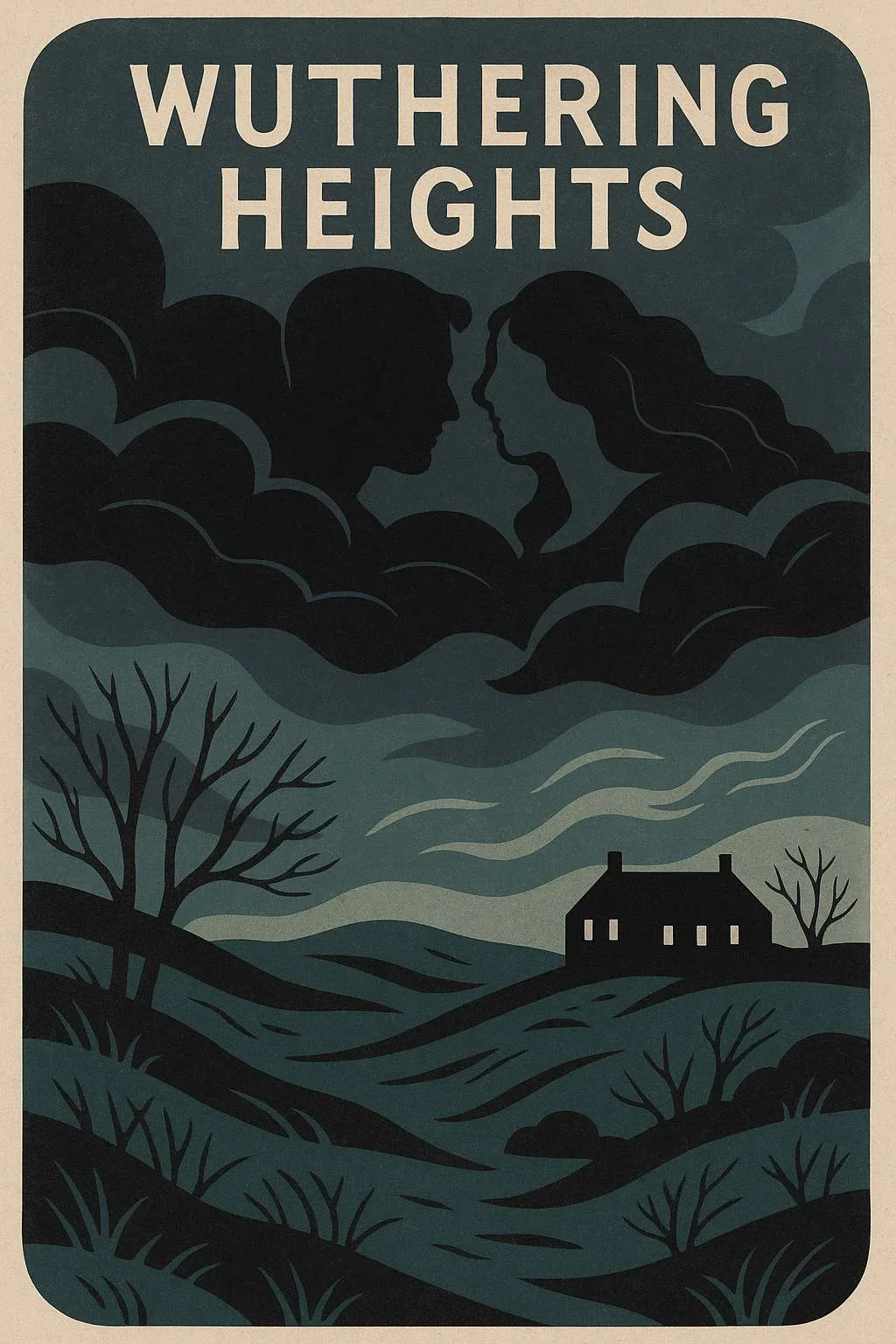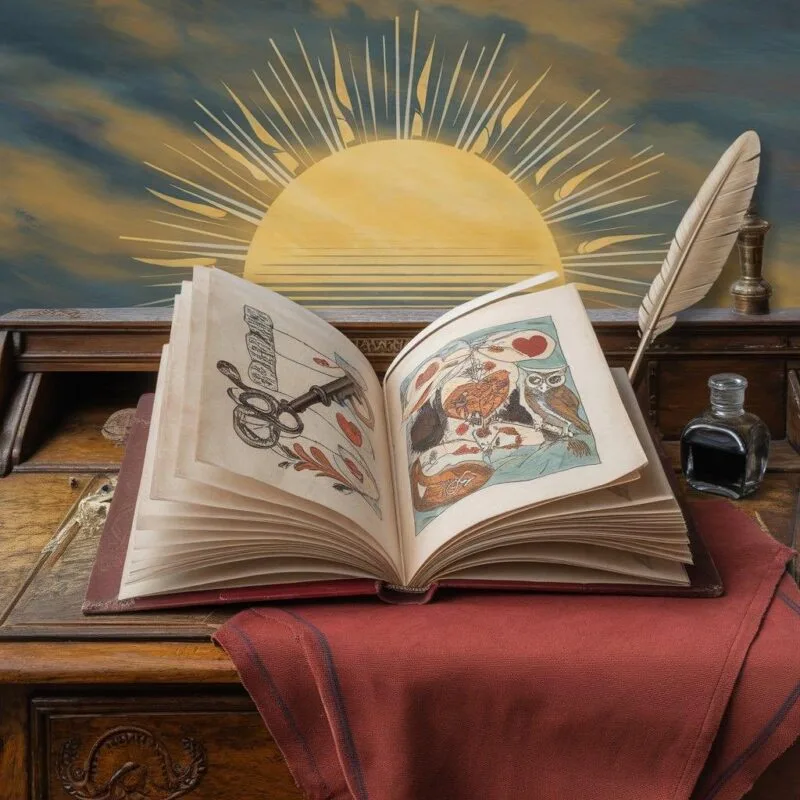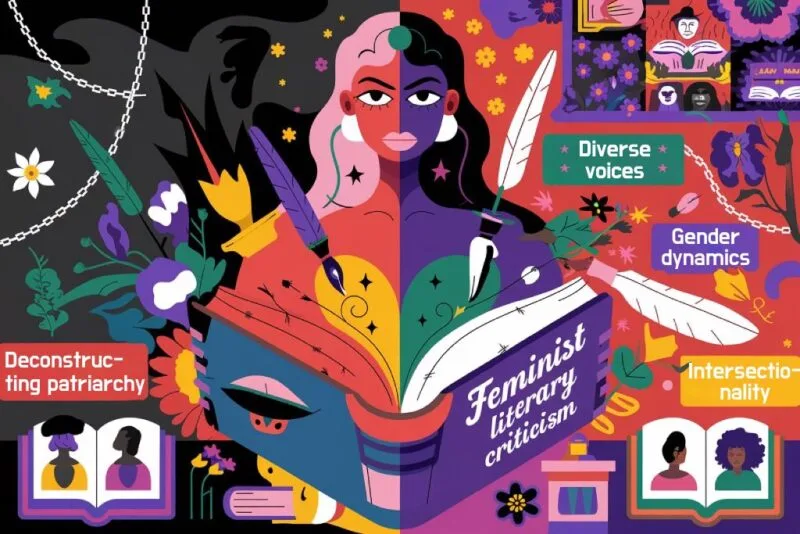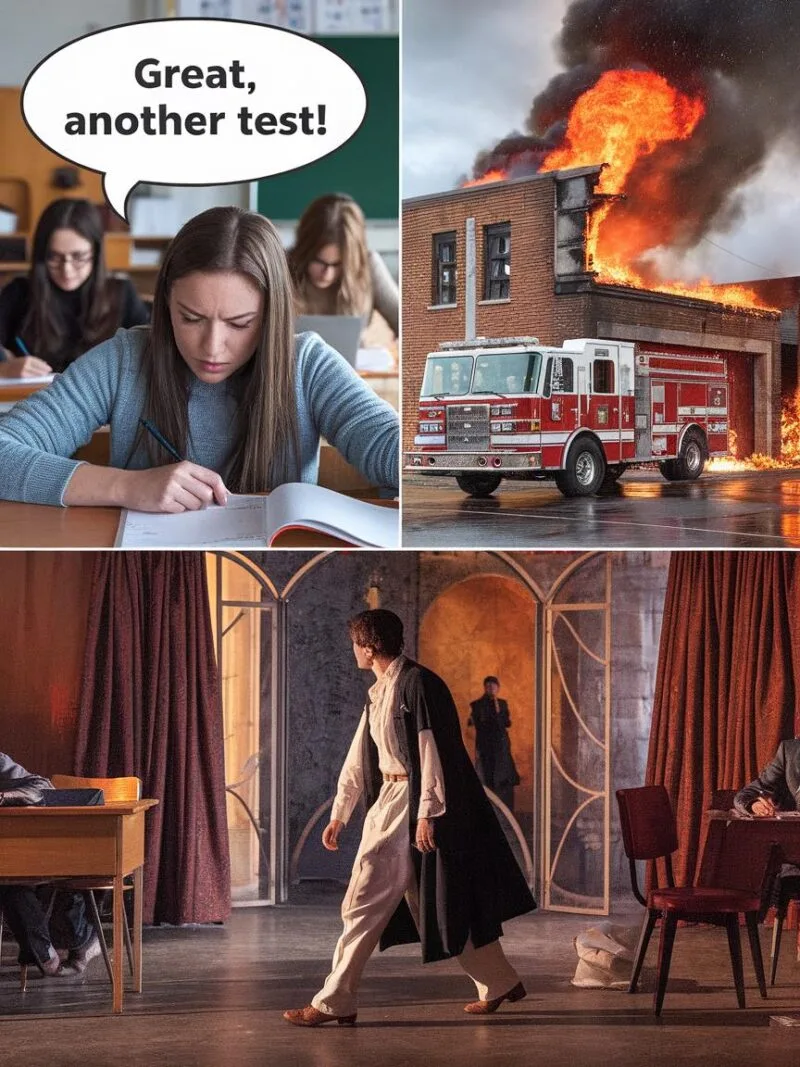- Wuthering Heights defies simple labels. While often remembered as a tragic romance between Catherine and Heathcliff, the novel goes beyond a love story. Brontë weaves together gothic tropes, generational trauma, revenge, and property inheritance in a structure of rare precision.
- Critics have variously interpreted the novel as:
– A critique of romantic idealism
– A Gothic narrative with moral ambiguity
– A study in class and gender oppression
– A reflection on intergenerational harm - Its dual narrators, Lockwood and Nelly Dean, create layered perspectives that challenge any definitive truth.
- Brontë’s use of nonlinear storytelling, strict chronology, and structural symmetry challenges assumptions of the novel as chaotic or overwrought.
- The story’s second half, often ignored in romantic readings, charts a movement toward healing, with the younger Cathy and Hareton breaking the cycle of vengeance.
- By resisting generic confinement, Wuthering Heights stands as an enduring and provocative study of violence, love, and renewal.
Emily Brontë’s Wuthering Heights (1847) has long challenged readers with its fierce characters and turbulent passions. At first glance, it appears to be a tragic love story, the haunting tale of Catherine Earnshaw and Heathcliff on the Yorkshire moors. Popular culture has reinforced this view, often presenting the novel as a sweeping romance framed by stormy landscapes and star-crossed longing.
Early reviewers, however, struggled to make sense of the book’s unruly form and subject matter. One 1848 critic called it “a strange book”—“wild, confused, disjointed and improbable.” Over time, literary critics have come to recognize Wuthering Heights as something more structurally ambitious and thematically layered. It blends elements of romance, gothic horror, family saga, and social critique in ways that defy simple classification.
This article examines how the novel challenges conventional labels by focusing on its structure and on key themes—revenge, intergenerational trauma, and inheritance—that have sustained its reputation as an “unclassifiable” masterpiece.
The “Doomed Romance” Interpretation and Its Limits
It is undeniable that the obsessive bond between Catherine and Heathcliff forms the emotional center of the novel. Catherine’s declaration, “I am Heathcliff,” and the belief that their souls are made of the same substance have led many readers to treat the book as a doomed romance. In popular imagination, they resemble a Byronic version of Romeo and Juliet—lovers torn apart by fate. Film and television adaptations have echoed this reading, reinforcing the image of passionate love thwarted by circumstance.
Yet this interpretation fails to capture the novel’s darker preoccupations. The relationship between Catherine and Heathcliff is not redemptive but destructive. Even Charlotte Brontë, writing in the 1850 preface to her sister’s novel, warned against mistaking Heathcliff’s passion for humane feeling, describing it as “fierce and inhuman.” In Wuthering Heights, love is inseparable from violence. Their connection breeds cruelty and disorder, harming not only themselves but everyone around them. For this reason, the novel has often been called an “anti-romance.” The supposed soulmates do not save one another but draw each other into anguish and obsession.
This reading gains significance when we consider what follows Catherine’s death. Her story does not conclude the novel but marks a turning point. Brontë devotes the second half to a new generation (young Cathy, Hareton Earnshaw, and Linton Heathcliff) who inherit the legacy of the first. A shallow romantic framing often overlooks this entire arc. In truth, Brontë uses the second generation to critique the first.
The younger Cathy and Hareton gradually form a healthy bond that heals some of the past wounds, suggesting the possibility of redemption and growth that the first generation never achieved. By the end, the “wild, knotty” passion of Catherine and Heathcliff gives way to a quieter, more hopeful union between their successors. This narrative trajectory defies the simple doomed-romance formula and points to broader theme, which will be explored in this article.
A Gothic Romance or Something More?
If not purely a love story, could Wuthering Heights be classified as a Gothic romance? It certainly shares DNA with Gothic novels of the late 18th and early 19th centuries. The setting is suitably Gothic: a remote, windswept moorland where Wuthering Heights, the old Earnshaw manor, stands bleak and imposing. Storms literally shake this house on the hill, symbolizing the turmoil inside.
The novel opens with eerie elements straight out of a ghost story: a narrator (Mr. Lockwood) tormented by a nightmare of Catherine’s ghost scratching at the window, and Heathcliff pleading for that spirit to return. This supernatural touch (Catherine’s lingering spirit) and the atmosphere of dread link the book to the Gothic tradition.
Moreover, Heathcliff himself is often likened to a Gothic villain, or even a demon. Described as “dark” and “savage,” his character fits the Byronic mold, taken to frightening extremes: mysterious in origin, obsessive in love, and vengeful to the point of monomania. His very name, Heathcliff, evokes the heath and the cliff (the untamed landscape) which aligns him with the elemental world so crucial to Romantic and Gothic literature.
Gothic Elements and Their Reinterpretation
Yet for all these surface affinities, the novel cannot be classified as a conventional Gothic romance. Traditional entries in the genre, such as those by Ann Radcliffe, feature innocent heroines pursued by tyrannical men in gloomy castles, usually rescued or redeemed by a final act of virtue. Brontë offers something far more subversive.
In Wuthering Heights, the “heroine” is no trembling Gothic maiden; she is willful, proud, and as “wicked” as her lover in many respects. The “villain” Heathcliff is also the love object, and Brontë asks us to both sympathize with and recoil from him. The novel’s women (Catherine, Isabella, young Cathy) do suffer at Heathcliff’s hands, but they are also sharp-tongued, strong-minded agents of chaos themselves, not passive victims.
Furthermore, unlike a tidy Gothic morality tale, the book offers little clear moral resolution— Heathcliff’s vengeance wreaks havoc without any divine punishment swooping in to save the day. In this sense, Brontë’s work is much harsher and more realistic about human cruelty than a typical Gothic romance. The Gothic elements are present, but they serve a larger, original vision that transcends the genre’s conventions.
Between Romanticism and Victorian Realism
It’s also worth noting that Wuthering Heights emerged at the crossroads of literary eras. Published in 1847, it came at the end of the Romantic period and on the cusp of Victorian realism. Brontë’s novel thus partakes of Romanticism (in its exaltation of nature, passion, and the irrational) even as it collides with Victorian concerns (such as propriety, social class, and moral didacticism). This might explain why the novel perplexed Victorian readers: it didn’t fit neatly with the realist domestic novels of its time, nor was it a throwback to pure Gothic fantasy.
One scholar observes that Brontë’s work “takes its themes from among Victorian motifs, but refuses the ‘rationalist’ discourse of the Victorians,” relying more on Romantic and even Platonic ideas. For example, Catherine and Heathcliff’s love is often described in spiritual or metaphysical terms: “I am Heathcliff,” Catherine says, as if their souls are one, which echoes Romantic and Platonic notions of soulmates.
But Brontë embeds that soulful passion in the gritty realities of property, inheritance, and social inequality, concerns very much of the Victorian moment. The result is a novel that uses Gothic-romantic tropes (ghosts, passionate storms, a sublime landscape) in order to tell a story that is also grounded in realistic social and psychological insight. In short, Wuthering Heights may be a Gothic romance on the surface, but it continually undermines and complicates that genre from within.
A Narrative of Unusual Complexity and Structure
One of the most remarkable aspects of Wuthering Heights—and a key reason it goes against simple genre labels—is its narrative structure. Brontë did not tell her story in a straightforward, linear fashion. Instead, she employed a frame narrative with multiple layers of storytellers, a technique that Terry Eagleton compared to “Chinese boxes,” each story nestled within another.
The novel’s outermost narrator is Mr. Lockwood, a genteel but clueless outsider who encounters the strange households of Wuthering Heights and Thrushcross Grange in 1801. Lockwood’s first-person diary frames the entire book, but he only directly narrates a small portion of it. Inside Lockwood’s account, we soon enter the main narrative: the housekeeper Nelly Dean’s eyewitness testimony of the events spanning the past thirty years.
Nelly, in turn, sometimes incorporates other characters’ voices (such as Isabella’s letter describing her abusive marriage to Heathcliff, or minor servant Zillah recounting events Nelly missed). The effect is a tale within a tale, or rather multiple tales within tales, each told in the first person by a character with limited knowledge and their own biases. This narrative design is highly unusual and was far ahead of its time, anticipating modernist techniques of unreliable and layered narration. Brontë’s use of dual narrators and shifting perspectives gives the novel a richly textured complexity.
Lockwood and Nelly Dean could not be more different in outlook, and their contrasting viewpoints encourage the reader to question and interpret the story actively. Lockwood, the educated southerner, is often a comic figure (he misreads the situation grotesquely, famously mistaking a pile of dead rabbits for a heap of cats, among other blunders) and even after hearing Nelly’s history, he fails to grasp the full emotional reality of what he’s told. Nelly, on the other hand, is deeply enmeshed in the tale—a servant to both the Earnshaws and Lintons, she witnessed most of the drama firsthand. But Nelly is hardly neutral or omniscient; she has her own prejudices, grudges, and moral judgments.
Critics have long debated Nelly Dean’s reliability (or lack thereof) as a narrator. She certainly shapes the story she tells Lockwood, emphasizing some events and perhaps glossing over her own role in the conflicts. For instance, Nelly disapproved of young Catherine Earnshaw’s wildness and Heathcliff’s conduct, and her narration subtly guides the reader to view events through a particular moral lens. The layered narration thus forces us to read between the lines.
Brontë’s fragmented storytelling (the cutting between narrators, time periods, and even fragments of found documents like Catherine’s diary) heightens the novel’s sense of mystery and psychological depth. We are never allowed to settle into a single, authoritative version of the tale; instead, the past haunts the present at every turn, and we as readers must piece together the truth from conflicting accounts. This structural complexity is a major reason Wuthering Heights evades simple classification. It is not organized like a typical romance or gothic thriller, but rather as a kind of puzzle or oral history, where storytelling itself becomes a theme.
Structural Symmetry and Chronological Precision
Far from being a chaotic mess (as early critics thought), Wuthering Heights is in fact meticulously constructed. In 1926, scholar Charles Percy Sanger published a famous close analysis of the book’s timeline and discovered a meticulous internal logic: the story spans three generations, with carefully constructed family pairings. Each household—Wuthering Heights and Thrushcross Grange—has a son and daughter; their children intermarry, and the next generation again merges the family lines.
Catherine Earnshaw’s daughter (young Cathy) ends up marrying both of her cousins in turn—first Linton Heathcliff (her maternal cousin) and later Hareton Earnshaw (her paternal cousin)—uniting the bloodlines that had been split at the start. Such a perfectly interlocked genealogy is incredibly rare in fiction (or life), and Sanger marvelled: “In actual life I have never come across a pedigree of such absolute symmetry…It is a remarkable piece of symmetry in a tempestuous book.”
This symmetry underlies the novel’s two-part structure: the first half focusing on Catherine, Hindley, Edgar, and Heathcliff, and the second half on their children or heirs (young Cathy, Hareton, Linton, and the now-aged Heathcliff). The patterns of relationships repeat across the generations, but with variations that allow Brontë to explore different outcomes, notably, a movement from hatred and isolation toward understanding and reconciliation in the second generation.
Even the novel’s chronology is unusually disciplined. Sanger found that dates, seasons, and character ages allow the attentive reader to reconstruct an exact timeline. The novel begins in 1801—explicitly stated in the first sentence—and uses subtle references to holidays, harvests, and other temporal cues to mark the passage of time. According to Sanger, few novels permit this kind of forensic dating.
What earlier readers saw as Brontë’s untamed, “illogical” storytelling was in fact a deliberate design. She broke the linear narrative and hid the framework just enough to create an aura of mystery and realism; but behind the scenes, the architecture is solid. Recognizing this intricate structure has been key to modern critics’ appreciation of Wuthering Heights as a work of art that is as tightly knit as it is emotionally explosive.
Revenge, Trauma, and Inheritance
Beyond love and romance, the book is fundamentally a story of revenge and the devastating effects of that revenge across two generations. The main plot can be viewed as Heathcliff’s long‑conceived scheme to punish those he believes wronged him and to seize control of everything they own. Denied social status and Catherine’s hand in marriage because of his low birth, Heathcliff returns after years away with newfound wealth and a single‑minded mission: to ruin the genteel family that slighted him.
Heathcliff’s revenge is intricate and merciless. He first exploits Hindley Earnshaw’s weaknesses by encouraging his drunken gambling until Hindley must mortgage Wuthering Heights to him, effectively stealing his birthright. Next, to strike at the Lintons, Heathcliff seduces Edgar Linton’s naïve sister, Isabella, into an abusive elopement, knowing it will break Edgar’s heart. His ultimate coup is to absorb Thrushcross Grange as well: he forces the frail young Linton (his son by Isabella) to marry Cathy Linton (Edgar’s daughter), so that when Edgar dies, Thrushcross Grange will pass into Heathcliff’s line.
Through this chain of manipulative marriages and inheritances, Heathcliff succeeds in acquiring both properties of the Earnshaws and the Lintons, precisely as he intended. Wuthering Heights thus hinges on inheritance law as much as passion. It is no coincidence that nearly every character is a cousin or in-law of the others; Brontë’s story is in large part about who inherits what, and how wealth and land become instruments of vengeance and coercion.
From Revenge to Generational Trauma
Heathcliff’s revenge, however, is more than a cold financial scheme; it is fueled by deep reservoirs of personal trauma and generational pain. Modern critics have increasingly examined Wuthering Heights through the lens of trauma studies, noting how the cycle of abuse repeats from one generation to the next. Heathcliff enters the Earnshaw family as an orphaned outsider, found “houseless, and as good as dumb, in the streets of Liverpool,” and from the start he is treated as inferior by the household.
Mr. Earnshaw raises him like a son, but after the old man’s death, Hindley Earnshaw demotes Heathcliff to the status of a servant and torments him relentlessly. The community, too, marks him as a “gypsy‑like” interloper, casting him as racially and socially “other.” These early experiences inflict wounds that never heal; Heathcliff “inherits” an anger and wildness from the cruelty and rejection he endures.
Once in power, he turns Wuthering Heights into a mirror of the abusive household he grew up in—he brutalizes Hindley’s son, Hareton, as Hindley once brutalized him, and he tyrannizes his own sickly son Linton. The first generation’s pain is passed down like a curse. They inherit a world tainted by their parents’ and caregivers’ sins.
Breaking the Cycle
Brontë does not leave this as a hopeless pattern. The latter part of Wuthering Heights explores whether and how the chain of trauma and revenge can be broken. The key lies largely with the younger Catherine (Cathy Linton, the daughter of Catherine and Edgar) who, unlike her mother, is raised with love, stability, and moral guidance from Edgar Linton and Nelly Dean.
Cathy Linton is spirited like her mother but has a gentler temperament that her upbringing nourishes. When Heathcliff’s cruelty threatens to ruin the lives of Cathy, Hareton, and Linton, she (with Nelly’s subtle help) chooses forgiveness and human connection over bitterness. She befriends the rough, illiterate Hareton (the very person Heathcliff tried to degrade) and teaches him to read, thus softening his hardened heart.
The two young people fall in love, not obsessively like Catherine and Heathcliff, but tenderly and playfully. This next‑generation romance becomes the antidote to the first generation’s doom. The novel’s conclusion finds Hareton and young Cathy planning to marry and leave Thrushcross Grange for a new life, symbolically healing the rift between Wuthering Heights and the Grange.
In the final chapters, Heathcliff himself, exhausted by the vengeance that brought him no peace, loses his will to continue the cycle and dies, seemingly overcome by longing for Catherine’s ghost. Brontë thus ends on a note of possible reconciliation: the “curse” on the Heights is lifted as the younger generation forges a different path.
The interplay of inheritance in the novel operates on both literal and metaphorical levels. Literally, much of the plot turns on who will inherit land and wealth, a concrete Victorian concern. Metaphorically, the novel asks: What do children inherit from the spiritual crimes of their parents? The story suggests that anger, cruelty, and sorrow can become an unwanted legacy. It also engages in social critique through this theme. Heathcliff’s trajectory shows how a child whom society treats with contempt may grow up to perpetuate that contempt in turn.
Beyond Classification: The Many Faces of Wuthering Heights
All of these facets—passionate romance and anti-romance, Gothic horror and social realism, structural sophistication and emotional rawness—make Wuthering Heights a work that ultimately defies any single genre label. It has been called a “unique and unclassifiable” masterpiece for good reason. Brontë took familiar elements from various traditions and fused them into something truly sui generis.
Interpreted Through Many Critical Lenses
The novel can be enjoyed (or indeed, interpreted) on multiple levels. It is a haunting love story, but also a savage revenge tragedy. It is a Gothic tale of spirits and wild nature, but also a realistic study of social class, as seen in the contrast between the civilized Thrushcross Grange and the rough Wuthering Heights. It is a sweeping chronicle spanning 30 years and two generations, but also an intimate psychological portrait of obsessive love and grief.
Every generation seems to discover new layers in it: some critics argue that Wuthering Heights engages with Christian moral language and spiritual tension, earlier feminist critics (e.g., Sandra Gilbert and Susan Gubar) saw it as a study in female rage and confinement, Marxist critics (e.g., Terry Eagleton) read it as a commentary on class conflict, and postcolonial critics have even interrogated Heathcliff’s possible racial otherness. The fact that the novel sustains all these readings speaks to its multifaceted design.
Brontë’s Narrative Risks and Enduring Vision
In terms of its formal innovation and thematic breadth, the novel was ahead of its time. Brontë herself, who famously had little worldly experience beyond her family parsonage, poured an astonishing imaginative power into this novel that shocked her contemporaries. She dared to create characters who are not easily likable or moral, yet compel our understanding. She dared to set her tale in a harsh rural land far from the drawing rooms of typical Victorian novels, populating it with uncouth servants, a sarcastic religious fanatic (Joseph), and raw depictions of domestic violence. And she dared to tell this story in a fragmented, looping way, challenging readers to actively assemble the truth.
The initial confusion of those 19th-century reviewers (“it is wild, it is confused…”) is testament to Brontë’s refusal to follow formula. Over a century and a half later, we can appreciate that this very wildness was in fact a controlled artistry. The novel’s form mirrors its content: just as the characters cannot be neatly classified as heroes or villains, the book itself cannot be neatly slotted into a single genre.
For serious readers today, engaging with Wuthering Heights is a reminder of how layered and revolutionary a great work of literature can be. It is a love story that interrogates what love really means when entangled with power and pain. It is a Gothic romance that uses the supernatural not for cheap thrills, but to symbolize enduring longing and guilt. It is a family saga that uses an almost classical symmetry of plot to examine whether human beings can change their fate or are doomed to repeat their parents’ mistakes. And through it all runs Brontë’s poetic vision of the natural world—the moors as moody, liberating, and indifferent to human suffering all at once.
Final Reflections on the ‘Wuthering Heights’ Plot
In the final analysis, attempting to classify Wuthering Heights as either a love story or a Gothic novel does not do full justice to its inventive tapestry. Brontë’s masterpiece ultimately demands a holistic reading, one that embraces its contradictions: the beloved and the damned, the realistic and the supernatural, the structured and the chaotic.
By prioritizing the novel’s structure in our analysis (noting the careful frame narrative and the generational symmetry) we see that it is far from disjointed, but a deliberate architecture of passion and vengeance. By examining themes like revenge, trauma, and inheritance, we uncover the profound critiques of social hierarchy and family legacy that underlie the “doomed romance.” And by weighing the contrasting perspectives (the naïve romantic vs. the critical realist view of the novel), we arrive at a richer understanding: Wuthering Heights was never meant to be a one-dimensional tale of star-crossed lovers. It is a multi-layered exploration of human extremes: love and hate, violence and redemption, isolation and connection.
Brontë’s singular novel thus occupies a category of its own. Perhaps the best way to honor its complexity is not to pigeonhole it at all. Serious readers will continue to debate its meaning and genre, but nearly all agree that the book’s power comes from this very resistance to simplification. In other words, the novel itself—like Heathcliff’s passions—is a force of nature. Whether the reader comes to it for the romance, the horror, the social critique, or the narrative ingenuity, Wuthering Heights endures as an experience as haunting as the winds over the moors. It is a love story, yes—but one that shatters the confines of that label and becomes something far more profound: a literary masterpiece that transcends the trappings of its genre.
Further Reading
Wuthering Heights on Wikipedia
Heathcliff From “Wuthering Heights” Isn’t A Romantic Anti-Hero, He’s A F*cking Monster by Christopher Shultz, Lit Reactor
Why is “Wuthering Heights” classified as a romantic novel? on Quora
Wuthering Heights isn’t a romance, but instead a deconstruction of romantic tropes on Reddit




